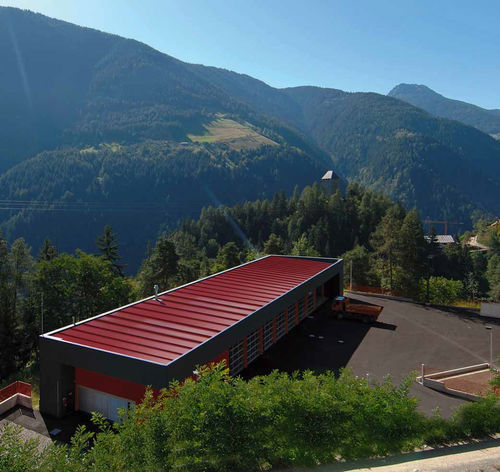The Roof Panel PUR/PIR With Flashing, AIS TAP, is a trapozoidal sandwich panel, consisting of two galvanized steel plates, the upper one has 3 ribs (two lateral and one central to provide greater mechanical resistance) and a lower one with or without micro-ribbing, which are bonded in a continuous manufacturing process to a hard core of polyurethane (PUR) or polyisocyanurate (PIR) foam at a density of 36-40 kg/m3.
The panel is designed for roofs with a minimum slope of 5%, although 7% is recommended, on any metal, wood or concrete support. The trim (included) covering the ribs of the joints between two panels enables them to be fastened invisibly in a combination of easy assembly, watertightness and look of the roof.
We have all the auxiliary fastening elements required, screws and trims for the Flashing Panel, compatible polycarbonate sheets for natural light and static aerators for ventilation.
As with all our panels, the AIS TAP Flashing Panel is customisable by selecting the type of cladding, colour and profile of the lower sheet.






